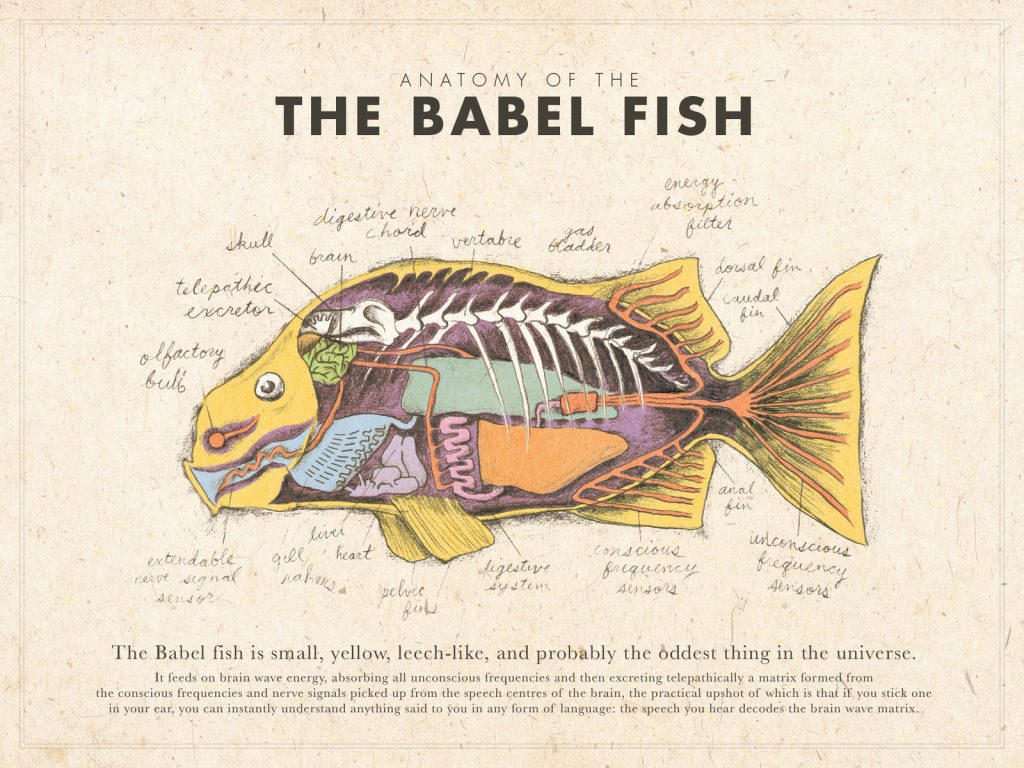Those who`ve read The Hitchhikers Guide to the Galaxy know about the Babel Fish: A fish that, when placed in your ear, instantly translates all foreign languages into your own. Of course this fish does not exist, but could a functionality like it become reality in the near future?
The hurdle to overcome
There are more than 6000 spoken languages on earth today, most of them completely incomprehensible to the average human (Nature). How great would it be if everyone could understand each other flawlessly? No more misunderstanding because of language, no more difficulty in expressing your opinion to foreign people! Also, most learning and working opportunities come in only a handful of languages, it is simply not doable to offer them in 6000 versions. Everyone speaking the same tongue would solve this source of inequality! Language difference is a huge hurdle, and real time translation could be the solution to overcome it.

How does real time translation work?
Real time translation, or often called RTT, is a tech-driven solution to instantly translate any language into another language. The most common process right now starts by transforming spoken sentences into written text. This text is then processed by a digital translator, resulting in a written sentence in the desired language. This computer can then read out this sentence so that the receiving person is able to hear it. There is an upcoming technique that skips the text processing and only analyzes the voice. The algorithms process the waveforms, and directly convert the pieces of speech into the language of choice (Marstranslation).
In both cases, the quality of translation strongly leans on Artificial Intelligence and different kinds of machine learning. Like an actual human, the algorithm gets better when trained a lot with all kinds of sentences. The system has access to an enormous amount of data in which certain words or sentences are matched with words and sentences in the new language. As a result, translations between languages that are often performed will be more accurate in their translation (Localize).
The Babel Fish within reach
The algorithms are being trained at a fast pace. Google translate has been downloaded over 1 billion time from the app store and supports more than 100 languages. Every day, more than 100 billion words are being translated, and with each translation the neural network is getting better (Google). This all sounds very promising, so when will the Babel Fish arrive? The answer is: it may actually be there already. Google released the Pixel Bud earbuds, that in combination with an android device can translate over 40 languages in real time. Other companies like Skype and Apple are also incorporating similar features into their products (Marstranslation). The translations are simply not flawless as of right now, and people are not familiar with using it in their daily life.
However, the future is looking bright. As explained earlier, the neural networks behind the translations are constantly being trained. Google researchers are even working on neural networks that will be able to translate languages without a lot of available data. This will mean that you will be able to communicate with people speaking (nearly) unknown languages. As most big companies are incorporating real time translations into their new products and the neural networks are getting better, it is safe to say that the Babel Fish is now truly within reach.



I won’t deny that it would be easy if there was no language barrier anywhere in the world. However, at the same time it would make things rather boring. I personally get a lot of satisfaction from learning a new language and being able to communicate with someone in their native tongue. So I am not sure if this Babel Fish would be for me.